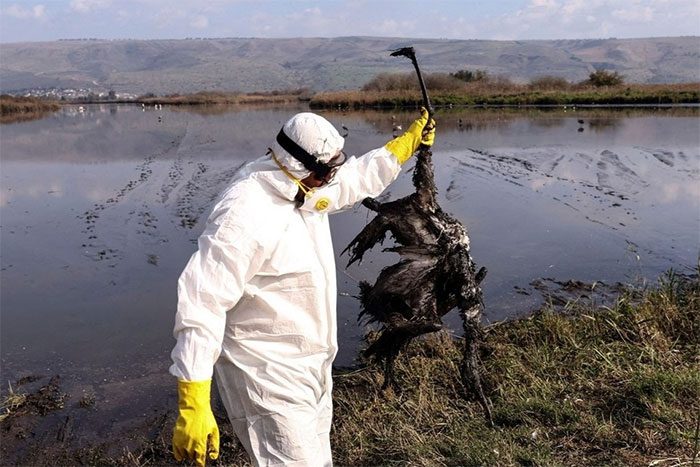The avian influenza virus is currently experiencing a significant outbreak of the H5N1 strain. Researchers have confirmed that this virus can infect various species.
According to Open Access Government, scientists believe that H5N1 has the potential to cause a global outbreak of avian influenza, primarily affecting wild bird species. They are concerned that the H5N1 strain may become “one of the most dangerous strains.”

Avian influenza is affecting many mammal species. (Photo: WILX).
Since the late 1990s, H5N1 avian influenza has caused numerous sporadic outbreaks. This strain originated from intensive poultry farms in Asia and has since spread worldwide.
This virus circulates among certain bird species. However, currently, H5N1 has also spread to mammals (including both wild and domesticated mammals).
The World Organisation for Animal Health has reported an increasing number of cases of mammals in Western countries infected and dying from the H5N1 virus.
In the United Kingdom, over the past two years, avian influenza has impacted and affected 65 species of wild birds. Similarly, according to records from the U.S. Department of Agriculture, in 2022 and 2023, the country detected avian influenza in crows, herons, red-breasted birds, black crows, owls, and many other bird species.
Currently, the spread of the H5N1 virus is also affecting egg and poultry prices in Western countries. Additionally, this virus is raising alarms about another potential pandemic in humans.
To combat the current avian influenza outbreak, the governments of the UK and the US have planned to deploy avian influenza vaccines. France is also set to begin vaccinating poultry in September.
Elsewhere, Ecuador has announced plans to vaccinate 2 million people.
Gov.UK reports that poultry infected with the H5N1 virus may exhibit signs such as: sudden death, swelling of the head, closing of the eyes, tearing, decreased appetite, lethargy, unresponsiveness, drooping wings, twisting the head into the neck, hemorrhaging, discolored or loose watery droppings, and a significant decrease in or cessation of egg production…
To date, scientists have identified five strains of avian influenza that have infected humans, including H5N1, H6N1, H7N9, H9N2, and H10N3. Among these, the H5N1 strain is considered the most potent and damaging.
According to Wired magazine, the H5N1 virus first transmitted from birds to humans in 1997 in Hong Kong, China, resulting in 18 reported cases of illness, with 6 fatalities.
Since then, variants of H5N1 have periodically infected humans each year. As of 2022, the World Health Organization recorded 868 cases of avian influenza in humans and 457 deaths.
The mortality rate for avian influenza in humans is 52%. Despite this high rate, the virus has not yet proven strong enough to easily spread from person to person and create large outbreaks.


















































